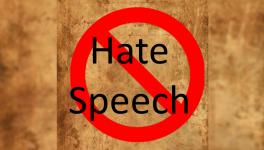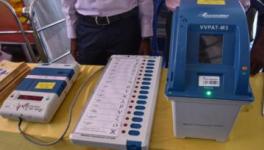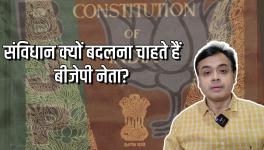VVPAT, the So-Called ISI Committee, and Mathematics in the Real World

The Supreme Court is currently examining a batch of Writ Petitions on how many VVPATs paper slips should be tallied with the count in the EVMs. The lead petition is that of the 21 parties, asking that 50% of the VVPATs be tallied with the EVM counts. In the last hearing of the Court, the Election Commission (EC) submitted a report through Sudeep Jain, a Deputy Election Commissioner in charge of the EVM division. The report, called the Indian Statistical Institute’s (ISI) Report, claimed that tallying of 479 randomly selected booths was enough to verify the fairness of the elections above 99.99 confidence level. Given that the EC counts many more than 479 booths in the Parliamentary elections, the conclusion that tallying VVPAT paper slips with the EVM count in one Assembly constituency is enough to establish the integrity of the elections.
Before we go into the mathematics done by the ISI professors, it is important to examine the fairness of the ISI Committee itself. Was it set up so as to ensure an unbiased view based on mathematics? Or was it set up to rubber stamp what the EC had decided already? It now transpires that this “Committee” was set up by Sudeep Jain – by writing a letter, not to the Director of ISI, but to Prof. Bhat, the head of its Delhi unit, asking for “associating with the commission and collaborating towards resolving the issues elaborated above...”. It did not ask ISI to form an ISI committee; it asked Professor Bhat, the Head of the Delhi Centre of ISI, to collaborate with the Election Commission in examining the issue.
An RTI report (attached with this article) shows that ISI received this letter addressed to Prof. Bhat, but ISI has no further record of any action taken or the formation of an “ISI” committee as claimed by Sudeep Jain in his affidavit to the Supreme Court. The ISI also has a process (attached here as well) for any external work. Obviously, this was not followed either. The so-called ISI Report, or more correctly the Bhat Committee Report, submitted by Sudeep Jain in his affidavit to the Court, itself says that the other two members – Rajeeva A Karandikar of Chennai Mathematical Institute (CMI) and Onkar Prasad Ghosh of Central Statistical Organisation (CSO) – were inducted into the Bhat committee. Initially, according to Bhat’s letter to the EC, Rajeeva A Karandikar was inducted into the Committee after discussions with the EC. Again, there is no mention of how the ISI was involved in this process. Later, Onkar Prasad Ghosh was nominated by the National Sample Survey Organisation to the Bhat Committee. Again, there is no mention of who requested NSSO to nominate a member for the Bhat Committee -- Prof. Bhat, the EC or ISI. The composition of the body seems to be a private decision worked out by the Election Commissioners and Prof. Bhat, without any ISI process. The body then has to be regarded as a private committee seeking to cloak itself with the credibility of the ISI. If this process is accepted as a valid process, any professor of ISI can also set up an “ISI Committee”, without referring to the head of ISI, who is its Director; and without reference to any approved process within the ISI.
The second issue with the Report, is, of course, its mathematics. There are several issues, but the key issue is that the Report believes that the entire elections is one election and not a set of elections for Parliament seats. If it is one election, then the random selection process cannot be a booth in each Assembly, but a randomisation of all the booths to select for tallying the 479 booths. In any case, the Indian election is not a presidential election, so it cannot be treated as one event; it is actually an independent election in each of the 543 constituencies, with their different candidates, number of candidates, parties and so on. As many as 543 independent events take place over a 7-week process, all adding up to electing 543 different candidates.
If we take the Bhat Committee’s methodology as correct -- except for treating it as 543 separate events -- the numbers required per constituency, even by the Bhat Committee’s methodology, would be very high.
The other serious problem with the Bhat Committee Report is that it does not take into account that elections can be close or can be completely one sided depending on the constituency. The need to tally VVPAT slips with EVM counts is much higher if, for example, the difference between the two top candidates are a few hundred votes than in constituencies where the differences can be as high as a lakh! In the US, where ballots are optically scanned and tallied by computers, manual counting of the ballots takes place if the election is a close one.
The problem with mathematicians – if they are not influenced by the real world – is that they May not understand beyond the “Platonic universe” – a mathematical space where the real world is kept out. They inhabit a world somewhat different than the one we human beings live in. And unless we take into the real world of politics into account, these mathematical exercises would be equivalent to video games.
The noted security expert Bruce Schenier (Securing Elections, April 20, 2018, https://www.schneier.com) has stated the problem well:
“Elections serve two purposes. The first, and obvious, purpose is to accurately choose the winner. But the second is equally important: to convince the loser. To the extent that an election system is not transparently and auditably accurate, it fails in that second purpose.”
Asking for VVPAT slips to be tallied is to convince people of the integrity and fairness of the elections. If 21 opposition parties are asking for VVPAT slips to be tallied, that is reason enough for the EC to concede the need to tally the slips. But standing on prestige and acting in adversarial terms does not bring the EC any credit. The EC must ask the central point regarding elections: it is not enough for justice to be done, but it must also be seen to be done. This is the question before the Supreme Court.
Get the latest reports & analysis with people's perspective on Protests, movements & deep analytical videos, discussions of the current affairs in your Telegram app. Subscribe to NewsClick's Telegram channel & get Real-Time updates on stories, as they get published on our website.
























